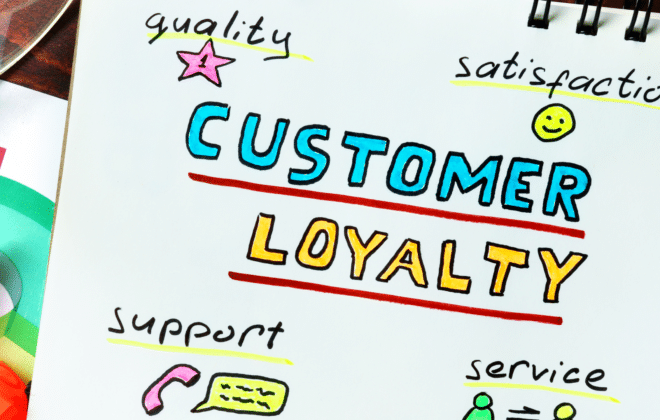
What Is Tiered Pricing & Its Meaning To Your Value As A Brand?
One of the most difficult price challenges that businesses face is product and brand positioning. How do you position your product or services in a manner that is aligned to your pricing model and caters to different customers? How can you categorise your offers and at the same time create varying price ranges for your target market? Today, we talk about what is tiered pricing and its meaning to your value as a business. What are the challenges, pros, and cons of this pricing model?
>Download Now: Free PDF How to Set up & Integrate a Pricing team
Your pricing structure and strategy are two different things. The pricing structure deals more with the price range. While your pricing strategy deals with how to align your prices with your solutions and customers’ needs.
In this article, we discuss tiered pricing and what it can do for your business in targeting a wider customer base. At Taylor Wells, we believe that strategising your pricing capability to different customers allows you to plan and execute your brand positioning better. We argue that incorporating your value into your pricing reflects your vision and mission as an organisation, as well as the qualities of the solutions that you provide for customers. By the end of this article, you’ll learn how to set and vary your prices using a tiered model to remain competitive in the market.
Tiered Pricing and What it Means to Your Value
To increase demand from your customers, retention and loyalty strategy, tiered pricing is positioned as a deal that customers can take advantage of. This is a way for you to leverage more opportunities for your value chain.
Volume pricing and tiered price model allow you to:
- attract a larger customer base
- generate more sales and revenue
- compete effectively in your market
What should you ask before using Tiered Pricing?
- Who are your customers?
- What features will you include in each of your products and services?
- How many tiers will you create?
- How much is your target market willing to pay for each tier?
- What is your marketing plan for each tier?
What is 3 Tiered Pricing and its Types?
1. Tiered pricing shows the features included in 3 different options in ascending order for each customer base. In other words, the price increases on the next “better” option.
For example, a 3-tiered pricing starts with a basic or standard version that has the least features. Option B will be the recommended or most popular package which has more features than the basic type. Lastly, the premium is the most expensive of the three options and includes all the best features a customer can get.
For instance:
The basic version is priced at $125
The regular version costs $150
The premium option costs $200
2. Package model requires a baseline that sets your price metrics. Otherwise, you need a fixed pricing model for each user. For instance, some businesses charge a certain price for the 100th customer.
3. For volume pricing, you set your prices based on the volume or unit of purchase made by customers. So, you essentially provide more discounts as they buy more of your product and services. In other words, customers receive discounts the more they buy. The more units that customers buy, the greater discount they receive.
This pricing model is best implemented for B2B customers that order large quantities of goods in which inventory, storage, stock levels, and time frame are the top priority. On the other hand, the downside to volume pricing is because the price drop is based on the larger volumes purchased, it generates less revenue than tiered pricing.
Discounts are ideal for introducing new products and for clearance sales when you need to get rid of old stock from your inventory. However, the downside to frequently lowering your prices is that it establishes your brand as poor quality in comparison to your competitors. Similarly, encouraging customers to only buy during major sales, discounts, and promotional offers, also conditions buyers to engage only during those times.
Challenges in Defining What is Tiered Pricing
1. Suddenly lowering your prices only to satisfy customers may establish an inconsistent value proposition especially when you need to raise prices back again. This is also known as devaluation when your value perception declines when you haven’t communicated the quality and reasonable pricing of your offerings.
2. Frequent massive discounts and promotional offers also will likely result in profit loss. Why? Generally, when you implement a price discount, you need to follow the ratio to sell more.
For instance, dropping your prices to 50% also means that you need to sell double the amount for you to hit your profit goals. Otherwise, you risk losing out on revenue and doing more damage than generating a high-priced income.
3. It’s important to keep your tiered pricing simple without over-complicating the options that will only confuse customers. Your goal is to help them decide and choose easily.
4. Likewise, it’s just as important to define your value chain based on the best pricing metrics that don’t undersell your offers considering the costs. You should identify how your customers connect with your product/services in terms of features, ease of usage, convenience, demand, and quantity.
Why Set Up a Pricing Capability?
Many companies don’t give pricing much importance, but hiring effective pricing teams can save a business from several downfalls. This includes pricing misalignment and underutilised analytics and insights.
Pricing teams are well versed in strategies, research, and the importance of pricing correctly. In fact, an effective pricing team who works closely alongside other departments can make all the difference when it comes to long-term growth and expansion.
In fact, our findings show that with the right set-up and pricing team in place, incremental earnings gains can begin to occur in less than 12 weeks. After 6 months, the team can capture at least 1.0-2.25% more margin using better price management processes. After 9-12 months, businesses are very often generating between 3-7% additional margin each year as they identify more complex and previously unrealised opportunities, efficiencies, and risks.
〉〉〉 Get Your FREE Pricing Audit 〉〉〉
Bottomline
Tiered and volume pricing has its advantages depending on the needs of your customers. You need to consider what works best for your business and industry. You put yourself at an advantage by targeting a bigger customer base, identifying upselling opportunities, delivering a better conversion rate, and improving customer relationship management.
It’s necessary to know which package is the most preferred or in demand by customers. From there, you can build new opportunities for a price increase, upselling, or cross-selling.
Likewise, it’s just as crucial to research your competitor’s offers. What do their customers value in their offerings? It takes time and effort to get useful information that you can analyse to make your services stand out and be better than the competitors’.
Lastly, don’t be hesitant to research, experiment, and change up your pricing models. Why? It’s because pricing is a continuous process that adapts to new buyer behaviour and market trends. It also helps attract new customers, communicates value, and product/service quality, and retains customer loyalty while minimising churn.
For a comprehensive view on building a great pricing team to prevent loss revenue,
Download a complimentary whitepaper on How To Build Hiring Capability To Get The Best Pricing Team
Are you a business in need of help to align your pricing strategy, people and operations to deliver an immediate impact on profit?
If so, please call (+61) 2 9000 1115.
You can also email us at team@taylorwells.com.au if you have any further questions.
Make your pricing world-class!
Related Posts
Leave a Reply Cancel reply
Categories
- marketing strategy (26)
- Organisational Design (14)
- Podcast (114)
- Pricing Capability (87)
- Pricing Career Advice (10)
- Pricing Recruitment (19)
- Pricing Strategy (289)
- Pricing Team Skills (13)
- Pricing Teams & Culture (24)
- Pricing Transformation (47)
- Revenue Model (25)
- Sales Effectiveness (27)
- Talent Management (7)
- Technical Pricing Skills (35)






